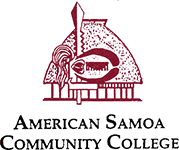American Samoa Community College MOODLE
15 Week Session
This course introduces the theory and practice of plane surveying, including measurement of distance and angles, use and care of instruments, error analysis, field problems, and office computations. Plane surveying introduces students to the skills and technological knowledge required for working in the field. Students learn to measure, calculate, and record direction, distance, and elevation using standard field equipment; advanced skills are taught through projects in which students use GPS for data collection and geometric calculations to measure curves. Prerequisites for this technical course are beginning land surveying and trigonometry. (Note: 4 lecture credits)
- Teacher: Petelo Ioane
This is a second semester course in surveying with the emphasis on the use of advanced survey instruments and their field applications in construction surveying. This highly technical class introduces the concept of creating a flat map, a plane, to describe a curved surface. Geodesy, measuring the shape of the Earth, is introduced. Students learn to use the North Star to determine direction. Determining errors in precision measurement is covered. This course is one of the last courses taken in a land-surveying program. (Note: 4 lecture credits)
- Teacher: Petelo Ioane
This course provides an in-depth introduction to the fundamentals of Geographic Information Systems (GIS). The course will include an introduction to basic cartographic principles including map scales, coordinate systems, and map projections. An in-depth review of the necessary hardware and software elements used in GIS will be made using ArcView. Applications of GIS technology as used in science, business, and government will also be presented. The topics will be reinforced with hands-on experience in map scales, coordinate systems, data sources and accuracy, data structures, working with spatial data, map, and overlays manipulation of databases and presentation of data in map layouts. (Note 3 lecture credits)
- Teacher: Petelo Ioane
